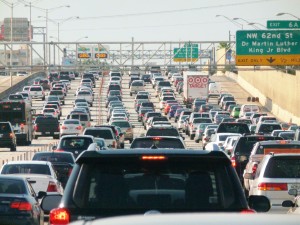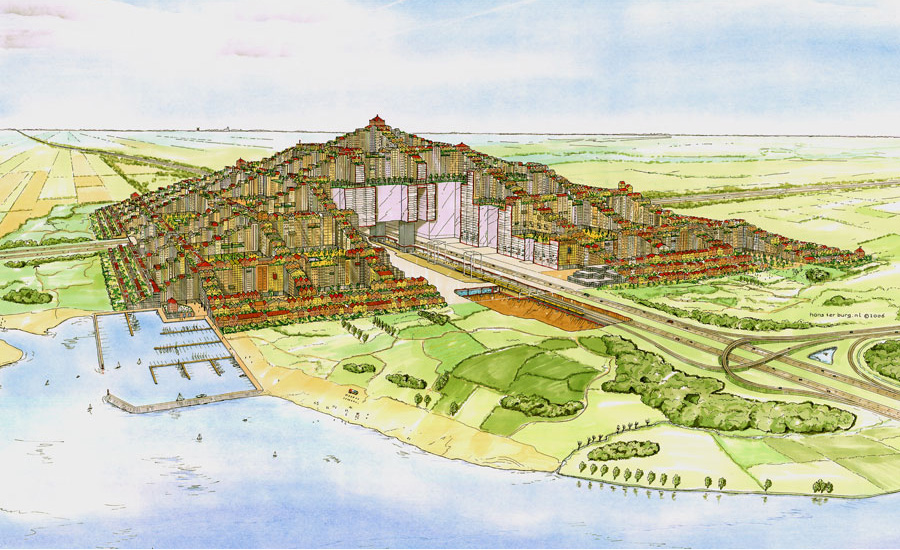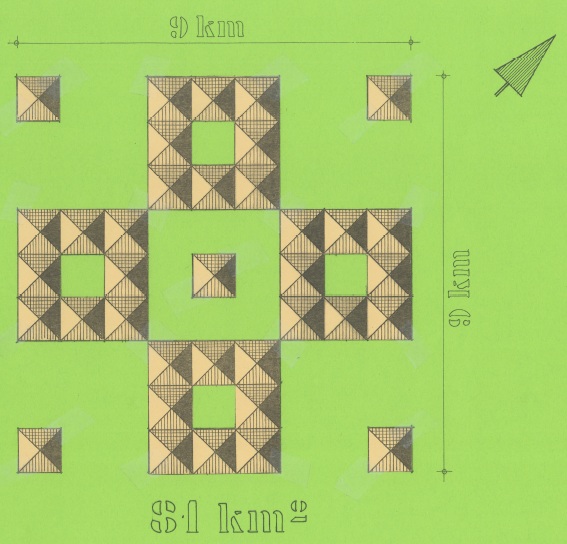As long as dictatorial or democratic governments (be it capitalist, socialist or communist) force those who possess nothing, to sell their labour for the sake of food and shelter to the highest bidder there will be war, poverty, unemployment and over-exploitation of nature, but also terrorism, crime, hunger, child labour, prostitution, corruption, humiliation and inequality. The poor have been unjustly dependent on a job for the sake of a little food and decent shelter since agriculture was invented. Until the Second World War these jobs were nearly always reachable on foot, by boat or bike. Due to the post-war urban development the majority of jobs, particularly in rich countries, was on a car ride or even plane ride’s distance away. This development has three disastrous consequences, namely:
- The age-long global focus on jobs is fatal, because mechanization, digitalisation and robotics increasingly make more and more people unemployed, which then either starve, get involved in criminal activities, flee to rich countries or are having to live of social welfare. Artificially creating new jobs in wealthy countries by promoting wasteful senseless fun with intrusive advertising, will only add to the otherwise already ruthless over-exploitation of nature.
- Those who do still have a job, are damaging the environment seriously, because for that very job they need at least a car, truck or plane.
The daily traffic jams, but also the trucks and planes that bring us our everyday food from all corners of the world emit so much CO2, that we are experiencing climate change and a rise in sea levels.
- The car-free pre-war cities have a high density and no outside urban road network. The post-war cities, because of cars, have a four times lower density and outside the city lies a large urban road network. The post-war cities therefor require much more ground, mostly agricultural land or forests. This is problematic because it creates a food issue, but the lack of habitat will additionally alter the present ecosystems and drive many animal and plant species into extinction. In the next 35 years another 3.5 billion poor farmers will move to the city, where, with decent housing of post-war urban development, require a land area of roughly 2 million km2, a slab of land the size of Argentina.
All of these problems can only be solved if we start living greener, by erecting more compact buildings such as pyramid cities and become independent of jobs, as follows:
- In a world where worldwide unemployment will only increase, governments should no longer be focused on jobs, jobs and nothing but jobs. Instead of focusing on the current policy ‘no job, no food’ governments should cast their gaze on ‘no job and still make a decent living’, the exact opposite. This requires the unemployed to perform unpaid labour for 2 to 3 years, under the leadership of a paid professional on the assembly line towards the realization of their own pyramid cities. Complete with urban agriculture and energy provision, after which they are rewarded with a basic income-in-kind, meaning debt free housing and free food and energy for the rest of their lives. They can thus lead decent lives regardless of employment, social benefits or fear of unemployment. This is possible because the pyramid cities can be built as if you were making a house with Lego, unskilled workers can quickly and easily build them up from scratch. The otherwise over-produced homes should be sold for prices that will provide cost-covering for the entire plan. This way, it won’t cost anyone a thing. On average, a 4 room apartment in the city in the Netherlands will approximately cost €98.000, incl. VAT and a piece of land. With an annuity mortgage of 30 years it comes down to about €450 per month which has to be afforded with a minimum gross income of €22.000.
- By building pyramid cities cars, trucks and planes are no longer really necessary, because part of the residents can live decently without a job through the acquired basic income–in–kind, and the other part has a job within walking or cycling distance from his / her home. There will be no CO2 emissions as a result of cars, trucks and airplanes being obsolete, thus also solving traffic problems. Furthermore, this green way of living allows the climate to recover and prevents the further rising of the sea level.
- In order to feed the 3.5 billion poor farmers and provide them with decent housing, a 40.000 km2 pyramid city is needed, an area roughly the size of the Netherlands, 50x less than Argentina. Because of this we will also avoid the food issue, but also by the lack of habitat and extinction of species as well as further tarnishing of the ecosystems.
Example.
If we were to erect pyramid cities on 15 x 15 km slab of land (size of Amsterdam = 225 km2) in a checkerboard formation, we would be able to house and feed all 16 million inhabitants of the Netherlands. The city would consist of a 120 km2 area of wilderness / park areas (white squares of the board) and 120 km2 pyramid cities (black squares). Everyone will then living around car-free squares the size of football fields and within walking distance (with maximum of 500 metres) of a beautiful park the minimal size of New York’s Central Park (4 km2). Because all the jobs will be within walking or cycling distance as well, there will not be any traffic jams anymore while the rest of the Netherlands could then be 40.000 km2 of unspoilt nature.



